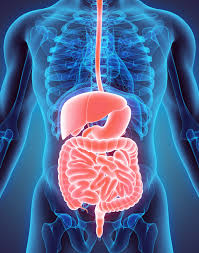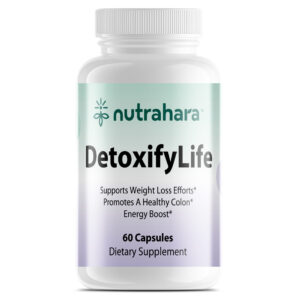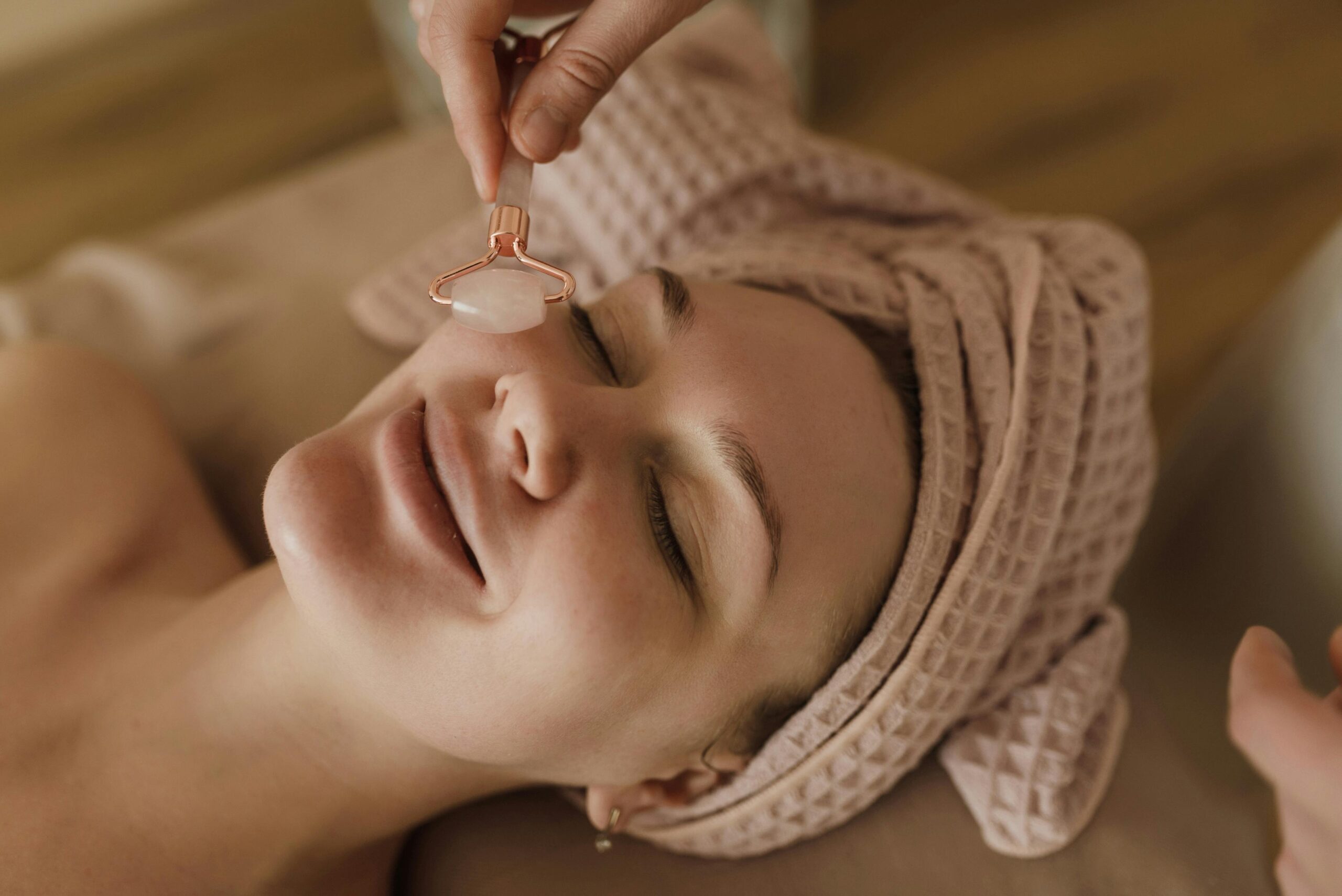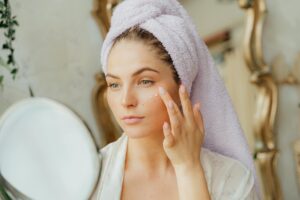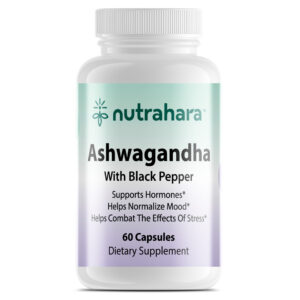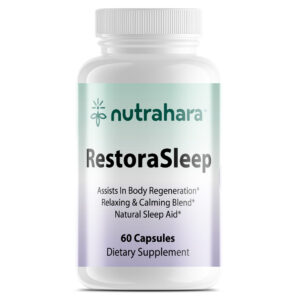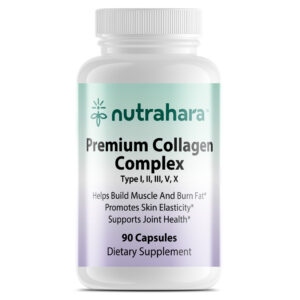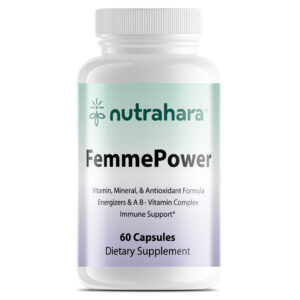
1. Understanding Prebiotics Supplements
1.1 What Are Prebiotics Supplements?
Most women have heard about probiotics, but far fewer fully understand the equally essential role of prebiotics supplements. Prebiotics are specialized plant fibers and non-digestible compounds that travel through the stomach and small intestine intact. When they reach the colon, they become nourishment for the beneficial bacteria living in your gut. Unlike probiotics—which introduce new bacteria—prebiotics supplements fuel and strengthen the microbiome you already have.
This nourishment allows your “good bacteria” to grow more robust, diverse, and stable. A thriving gut microbiome supports digestion, metabolism, mood, hormone balance, and immunity—areas especially relevant for women navigating the physiological changes of their 30s, 40s, 50s, and beyond.
1.2 How Prebiotics Supplements Differ From Probiotics
Though often confused, prebiotics and probiotics play different but complementary roles. Probiotics are the actual living microbes, while prebiotics supplements act like fertilizer, supporting their growth and activity. Without adequate prebiotics, probiotics may not colonize effectively. That’s why many women feel a significant difference only when they start taking prebiotics supplements consistently.
1.3 Why Women Ages 30–60 Benefit Most From Prebiotics Supplements
Hormonal fluctuations, stress, slower digestion, changing dietary habits, and declining microbial diversity all begin to affect women more noticeably after age 30. These shifts can lead to bloating, irregularity, food sensitivities, stubborn weight gain, fatigue, and mood swings. Prebiotics supplements help restore microbial balance, supporting a healthier gut-brain-hormone connection. This makes them a powerful, natural tool for maintaining vitality, regular digestion, and emotional well-being during midlife transitions.
2. Science-Backed Benefits of Prebiotics Supplements
2.1 Improved Digestive Health With Prebiotics Supplements
One of the most profound benefits of prebiotics supplements is their ability to enhance digestion naturally. By feeding beneficial gut bacteria, prebiotics help produce short-chain fatty acids (SCFAs) like butyrate—crucial for maintaining a healthy intestinal lining. This strengthens gut integrity, reduces inflammation, and improves overall digestive comfort. Women who incorporate prebiotics supplements often report fewer episodes of bloating, constipation, and gas. Over time, a consistent intake of prebiotics helps regulate bowel movements and creates a smoother, more predictable digestive rhythm.
2.2 Enhanced Nutrient Absorption Through Prebiotics Supplements
A well-nourished gut microbiome plays an essential role in nutrient absorption. Prebiotics supplements help beneficial bacteria flourish, allowing the body to better absorb minerals like calcium, magnesium, and iron, as well as B-vitamins. For women between 30 and 60—who may experience declining nutrient absorption due to hormonal shifts—this makes prebiotics supplements a valuable daily tool to support energy, bone health, and mental clarity.
2.3 Hormonal and Immune Benefits of Prebiotics Supplements
Women often underestimate how strongly the gut influences hormones and immunity. Because nearly 70% of the immune system lives in the gut, strengthening that environment with prebiotics supplements helps the body defend against common infections and reduces inflammatory responses. Additionally, a balanced microbiome assists the body in metabolizing and clearing excess estrogen, making prebiotics supplements particularly helpful during PMS, perimenopause, and menopause.
2.4 Weight, Mood, and Metabolic Support From Prebiotics Supplements
Research shows that the gut plays a major role in appetite regulation, metabolism, and even emotional well-being. By promoting healthier bacterial diversity, prebiotics supplements support balanced cravings, improved metabolic efficiency, and steadier moods. Women often notice improved energy and lighter digestion within weeks of consistent use.
3. Types of Prebiotics Found in Prebiotics Supplements
3.1 Inulin in Prebiotics Supplements
Inulin is one of the most popular and well-researched fibers found in prebiotics supplements. Derived primarily from chicory root, artichokes, and certain vegetables, inulin moves through the digestive system undigested until it reaches the colon. There, it becomes a rich food source for bifidobacteria—one of the most beneficial types of gut bacteria for women’s digestive comfort. Because it can help soften stool and promote regularity, many women notice improvements in bloating and sluggish digestion when taking prebiotics supplements containing inulin. It’s gentle, effective, and ideal for women seeking a natural way to restore gut balance.
3.2 FOS and GOS Prebiotics Supplements
Fructooligosaccharides (FOS) and galactooligosaccharides (GOS) are other widely used ingredients in prebiotics supplements, particularly those designed for sensitive digestive systems. FOS is derived from fruits and vegetables, while GOS is often sourced from lactose but purified for supplement use. Both support the growth of bifidobacteria and lactobacilli—key strains associated with immunity, hormone balance, and digestive ease. Women who incorporate prebiotics supplements containing FOS or GOS often experience a gentler boost in beneficial flora without the discomfort sometimes associated with traditional fibers.
3.3 Resistant Starch in Prebiotics Supplements
Resistant starch is another powerful prebiotic ingredient found in advanced prebiotics supplements. It comes from green bananas, potatoes, legumes, and certain grains. This type of starch resists digestion and serves as food for microbiota that help regulate blood sugar, metabolism, and inflammation. Many women appreciate prebiotics supplements containing resistant starch for its ability to support balanced cravings, weight management, and metabolic stability—especially during midlife changes.
3.4 Polyphenols as Prebiotics Supplements
Polyphenols are plant compounds found in berries, teas, herbs, and greens, and they act as natural prebiotic agents. Though not fibers, they promote microbial diversity by feeding beneficial bacteria and reducing harmful strains. Many modern prebiotics supplements now incorporate polyphenol-rich extracts for their antioxidant and gut-supportive effects. Nutrahara’s DetoxifyLife, while not a classical prebiotic, contains plant-based detoxifiers that support gut cleansing and indirectly enhance the prebiotic benefits by reducing inflammation and toxic buildup in the digestive tract.
4. How to Choose Quality Prebiotics Supplements
4.1 Look for Clean, Non-GMO Prebiotics Supplements
When selecting prebiotics supplements, purity matters. Many women unknowingly use products filled with artificial sweeteners, synthetic fillers, or low-quality fibers that can cause digestive discomfort. High-quality prebiotics supplements should be free from GMOs, artificial colors, preservatives, and unnecessary additives. Clean formulas ensure that the fibers can do their job effectively—feeding gut-friendly bacteria without irritating the stomach. Women ages 30–60, who may already be dealing with sensitive digestion, benefit greatly from choosing supplements with transparent labeling and responsibly sourced plant fibers.
4.2 Choose Prebiotics Supplements With Multiple Fiber Types
A diverse microbiome thrives on a variety of fibers. That’s why the best prebiotics supplements include multiple prebiotic sources such as inulin, FOS, GOS, and resistant starch. Each type feeds different beneficial bacteria, promoting stronger microbial diversity. This variety helps reduce bloating, improve regularity, and support long-term gut balance. For women navigating hormonal shifts or metabolic changes, broad-spectrum prebiotics supplements provide more comprehensive digestive support.
4.3 Check for Synergistic Digestive Ingredients
Some prebiotics supplements are formulated alongside supportive herbs, enzymes, or detoxifying plant extracts that enhance digestive efficiency. For example, Nutrahara’s DetoxifyLife contains natural botanicals that help cleanse the gut and liver—making your digestive system more receptive to prebiotic nourishment. Similarly, FatBlitz contains metabolism-supportive ingredients that pair well with prebiotic-driven improvements in gut balance, helping women feel lighter and more energized.
4.4 Consider Sensitivities When Choosing Prebiotics Supplements
Women with IBS, SIBO, or a sensitive gut should choose gentler prebiotics supplements or start with a smaller dose. Some fibers ferment more rapidly, which can initially cause gas or bloating. Slowly increasing the dosage allows your microbiome to adapt comfortably. Always listen to your body—your ideal prebiotics supplements should support digestion, not overwhelm it.
5. How to Use Prebiotics Supplements for Best Results
5.1 Timing Matters for Prebiotics Supplements
When incorporating prebiotics supplements into your routine, timing can make a meaningful difference. Most women benefit from taking prebiotics supplements in the morning with breakfast or during a mid-day meal. This allows the fibers to work alongside natural digestive activity and helps reduce any initial sensitivity. Taking prebiotics supplements earlier in the day also supports sustained energy, stable digestion, and smoother bowel movements throughout the day.
5.2 Start Slow With Prebiotics Supplements
Because prebiotics supplements nourish beneficial bacteria, they often increase fermentation in the gut—especially during the first few days. This is completely normal, but it can cause temporary gas or mild bloating if introduced too quickly. To avoid discomfort, start with a smaller dose of prebiotics supplements and gradually increase your intake over one to two weeks. This gentle approach allows your microbiome time to adjust and thrive.
5.3 Pair Prebiotics Supplements With Probiotics
For even greater digestive and immune benefits, consider pairing prebiotics supplements with probiotic-rich foods or supplements. This combination—called a synbiotic—creates a powerful environment for beneficial bacteria to flourish. While probiotics introduce healthy microbes, prebiotics supplements feed them, helping them colonize more effectively. Many women report enhanced digestion, mood stability, and fewer cravings when using both together.
5.4 Stay Hydrated When Using Prebiotics Supplements
Hydration is essential when taking prebiotics supplements because fiber requires water to expand, soften stool, and move smoothly through the digestive tract. Drinking water consistently throughout the day not only reduces the risk of constipation but also enhances the effectiveness of prebiotics supplements. Aim for steady hydration rather than large amounts at once, and listen to your body’s cues.
6. 7 Expert Tips for Getting the Most Out of Prebiotics Supplements
Tip 1: Combine Prebiotics Supplements With Plant-Rich Meals
Tip 2: Take Prebiotics Supplements Daily for Best Results
Tip 3: Support Prebiotics Supplements With Stress-Reducing Habits
Tip 4: Add Movement to Improve the Effects of Prebiotics Supplements
Tip 5: Use Prebiotics Supplements Alongside Nutrahara DetoxifyLife
Tip 6: Use Prebiotics Supplements With Nutrahara FatBlitz for Metabolic Support
Tip 7: Track Changes When Using Prebiotics Supplements
7. Real Women Testimonials on Prebiotics Supplements
Testimonial 1 – Priya, 42
“I began taking prebiotics supplements after years of post-meal bloating and discomfort. I noticed the first changes in just a few days—lighter digestion and less heaviness in my stomach. After pairing prebiotics with DetoxifyLife, the difference became even more noticeable. My gut feels calmer, my energy is steadier, and I finally feel in control of my digestion.”
Testimonial 2 – Maria, 57
“Perimenopause changed everything for me—my metabolism slowed, and my digestion became unpredictable. Adding prebiotics supplements helped me regain balance. My regularity improved, my mood stabilized, and I felt less inflamed. With FatBlitz, my midsection feels more manageable, and I have more energy throughout the day.”
Testimonial 3 – Aisha, 34
“As a mom of two, I rarely get enough fiber from my meals. Prebiotics supplements became an easy way to support my gut health. I feel less bloated, my skin is clearer, and even my cravings have settled down. I love how gentle but effective they are.”
Testimonial 4 – Kavita, 50
“I used probiotics for years but never realized how much I needed prebiotics supplements. After adding them, I felt my digestion improve within a week—less gas, easier bowel movements, and a lighter feeling overall. The combination is powerful.”
Testimonial 5 – Danielle, 46
“I was skeptical at first, but prebiotics supplements truly transformed my gut health. I experience way less discomfort now. Adding DetoxifyLife helped me feel even cleaner and more energized—like my whole digestive system is finally working with me instead of against me.”
8. How Nutrahara Supports Your Gut Wellness Journey
8.1 DetoxifyLife and Prebiotics Supplements for Deep Cleansing
Pairing prebiotics supplements with a high-quality detox formula can significantly amplify your gut health journey. Nutrahara’s DetoxifyLife is designed to support liver function, promote natural detoxification, and reduce inflammatory buildup—all of which help create a clean, receptive environment for beneficial gut bacteria to flourish. Because prebiotics supplements work by feeding your microbiome, the cleaner and less inflamed your gut is, the more effectively those prebiotics can be utilized.
Many women struggle with sluggish digestion from years of stress, processed food consumption, or hormonal fluctuations. DetoxifyLife complements prebiotics supplements by flushing out toxins, easing digestive discomfort, and helping the intestinal lining become more balanced and resilient. Together, they act as a powerful duo—DetoxifyLife clears the path, and prebiotics nourish the microbiome, resulting in smoother digestion, reduced bloating, clearer skin, and improved vitality.
8.2 FatBlitz and Prebiotics Supplements for Metabolic Support
While prebiotics supplements help regulate appetite, reduce cravings, and support healthier metabolic bacteria, Nutrahara’s FatBlitz enhances this effect by supporting fat oxidation and boosting metabolic activity naturally. Women in their 30s through 60s often experience slower metabolism due to hormonal shifts, reduced muscle mass, and stress-related cortisol spikes. This is where combining FatBlitz with prebiotics supplements becomes particularly effective.
Prebiotics improve metabolic balance at the microbial level, while FatBlitz elevates energy levels and supports healthier fat processing. The synergy helps women feel lighter, more energized, and more in tune with their hunger cues. Over time, this combination encourages healthier weight management without extreme dieting or harsh stimulants.
9. Final Thoughts: Why Prebiotics Supplements Are Essential for Women’s Wellness
Prebiotics supplements are one of the most transformative yet often overlooked tools in a woman’s wellness routine. As women enter their 30s, 40s, 50s, and beyond, the body undergoes a series of subtle but impactful shifts—changes in hormones, metabolism, stress levels, digestive strength, and nutrient absorption. These shifts can affect everything from mood and cravings to energy, weight, and immune resilience. What makes prebiotics supplements so powerful is their ability to support all these areas by strengthening the foundation of health: the gut microbiome.
A well-nourished microbiome helps regulate hormone metabolism, reduce inflammation, improve digestion, and support a calmer, more stable mood. Unlike probiotics—which add bacteria to the gut—prebiotics supplements fuel the beneficial bacteria you already have, allowing them to multiply and reestablish balance naturally. This makes them incredibly effective over time, especially when paired with gut-friendly lifestyle habits.
Additionally, prebiotics supplements are easy to integrate into daily routines. With consistent use, many women notice lighter digestion, fewer cravings, improved mental clarity, and a more energized, balanced feeling throughout the day. The microbiome thrives on nourishment, and prebiotics provide exactly what it needs to function optimally.
When combined with Nutrahara formulations like DetoxifyLife for detoxification and FatBlitz for metabolic support, prebiotics supplements become even more impactful. Together, they support a holistic, sustainable approach to gut health and whole-body vitality.
Ultimately, prebiotics supplements empower women to restore balance from the inside out—naturally, gently, and effectively—helping them feel healthier, lighter, and more in tune with their bodies at every stage of life.
Disclaimer: This article is not a substitute for medical advice. Please consult a healthcare professional before starting any supplement, especially if pregnant, nursing, taking medication, or managing health conditions.
Written by the Nutrahara Team
This article was developed by the Nutrahara team of nutrition scientists and naturopaths, who specialize in formulating safe, effective, and science-backed supplements for women’s health. Every ingredient we use is carefully selected to support your body’s unique needs—naturally. Follow us on LinkedIn for expert insights and updates on our latest wellness solutions.

